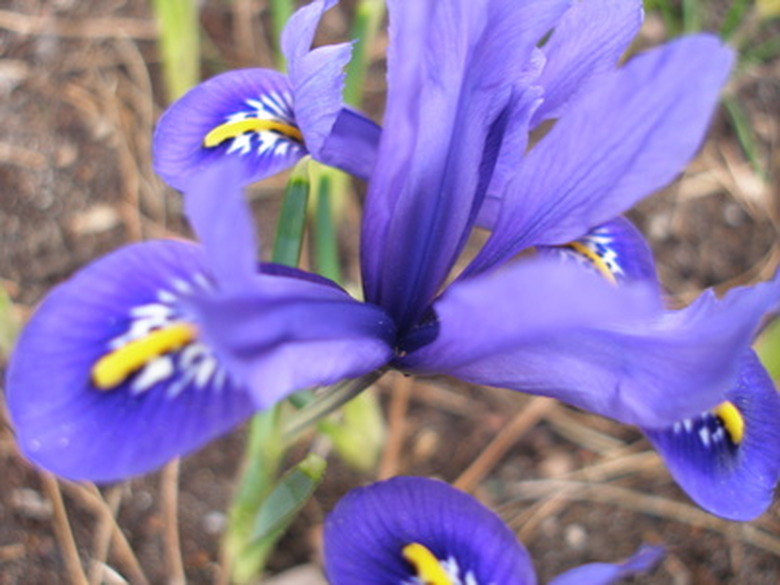How To Plant Iris Bulbs In The Fall
Things Needed
- Shovel
- Peat moss
- Fertilizer
- Rake
- Bonemeal
- Straw mulch
Iris flowers are spring blooming bulbs. Orchid-like flowers appear on upright stalks. Irises are available as bulbs with clipped roots and leaves. They can remain out of the ground for a couple of weeks, but they need planting as soon as possible. Planting iris bulbs in the fall gives the gardener the best selection of bulbs. It also allows the bulbs to grow roots before the cold winter weather hits. Fall-planted iris bulbs are more likely to produce blossoms the next spring than bulbs planted in the early spring. Irises are used in flowerbeds and as border, landscape and foundation plantings.
- Iris flowers are spring blooming bulbs.
- Irises are available as bulbs with clipped roots and leaves.
Soil Preparation
Step 1
Remove weeds, grass and brush from a planting site exposed to full sunlight. Irises do best when they do not have to compete with other plants for resources.
Step 2
Loosen the soil to a depth of 10 inches with a shovel. Break up large clumps of soil and remove any buried debris.
Step 3
Spread a 2- to 4-inch layer of peat moss or compost on top of the soil. This improves soil drainage and enriches the soil with organic materials.
Step 4
Spread 2 pounds of 5-10-10 fertilizer for every 100 square feet of garden.
- Remove weeds, grass and brush from a planting site exposed to full sunlight.
- Spread a 2- to 4-inch layer of peat moss or compost on top of the soil.
Step 5
Work the soil amendments into the top 4 to 6 inches of soil. Rake the iris bed smooth.
Planting
Step 1
Loosen the soil again two to three weeks later to a depth of 6 inches.
Step 2
Dig a hole as deep as the iris bulb. Toss a handful of bonemeal in the hole.
Step 3
Create a mound of soil in the bottom of the hole. Place the bulb on the mound. Adjust the height of the mound so that the top of the bulb is just barely below the ground.
- Work the soil amendments into the top 4 to 6 inches of soil.
- Create a mound of soil in the bottom of the hole.
Step 4
Spread the roots over the sides of the mound. Bury the bulb until it is covered with 1/2 inch of soil. Firm the soil so the iris stays in place.
Step 5
Space the rest of your irises 8 to 18 inches apart. Sprinkle the area with water until the soil is wet. Cover with 4 to 6 inches of straw mulch to protect the newly planted irises from winter weather.
Tip
Dig up the irises every two to three years. Divide the roots by cutting the new bulbs from the old bulb. Wait to divide the roots until the flowering is finished and the leaves have died back.
Warning
Irises do not like standing water. Plant irises in raised flowerbeds to solve issues with heavy, poor-draining soil. Do not use barnyard manure with irises because it keeps the soil too wet and the roots will rot.
